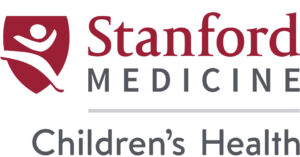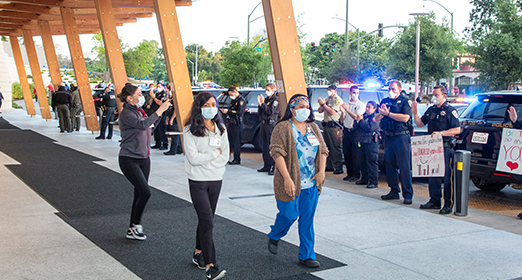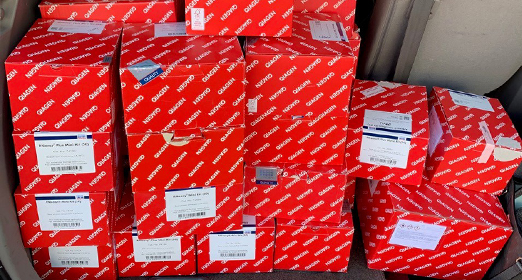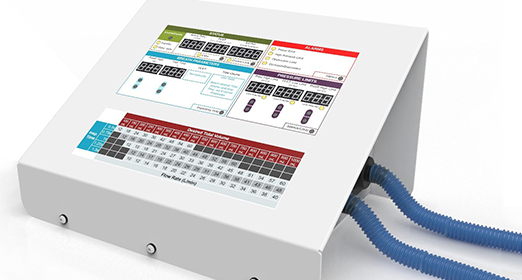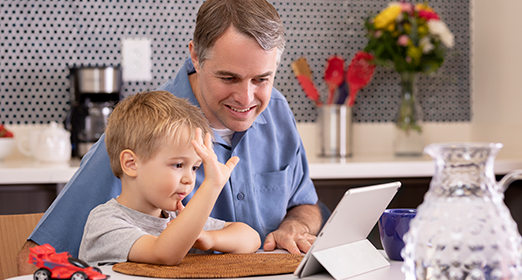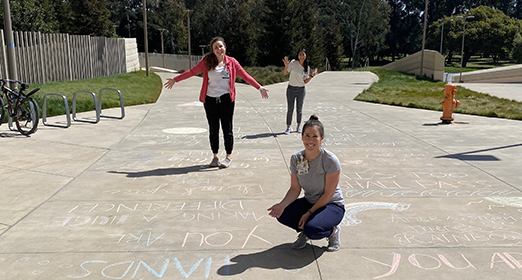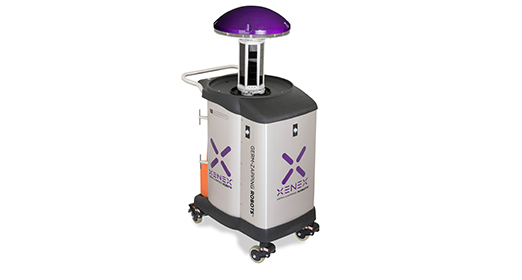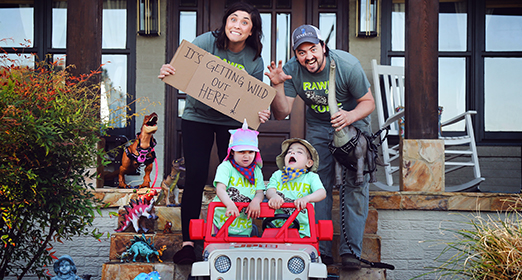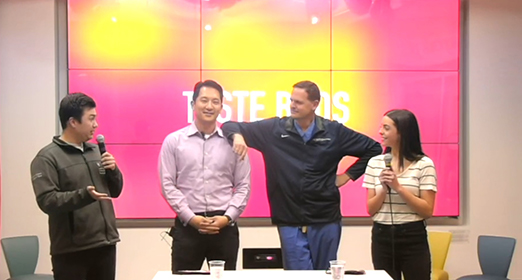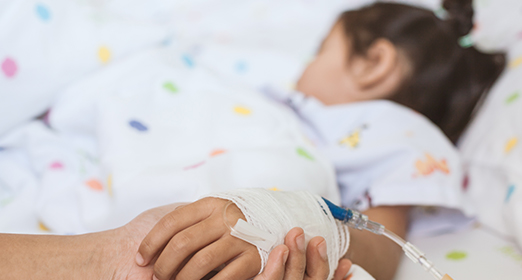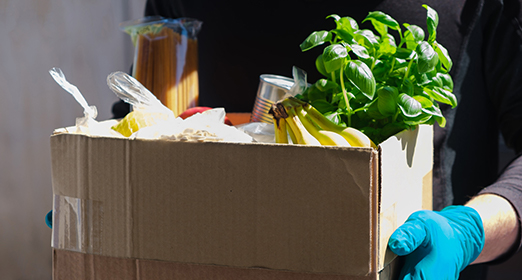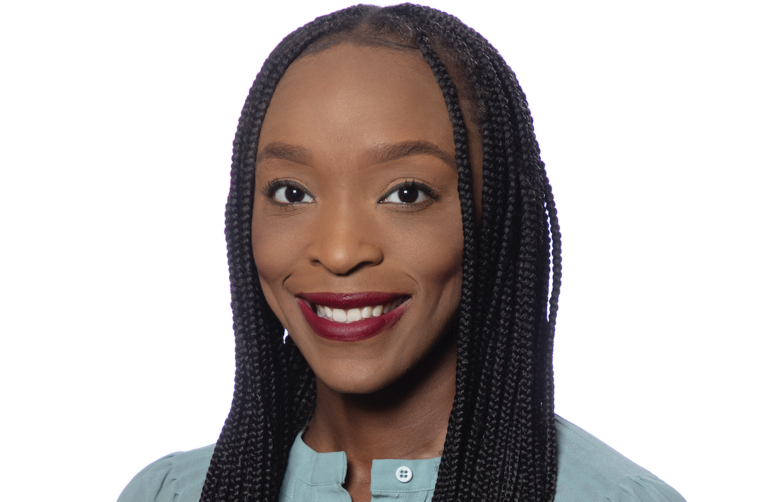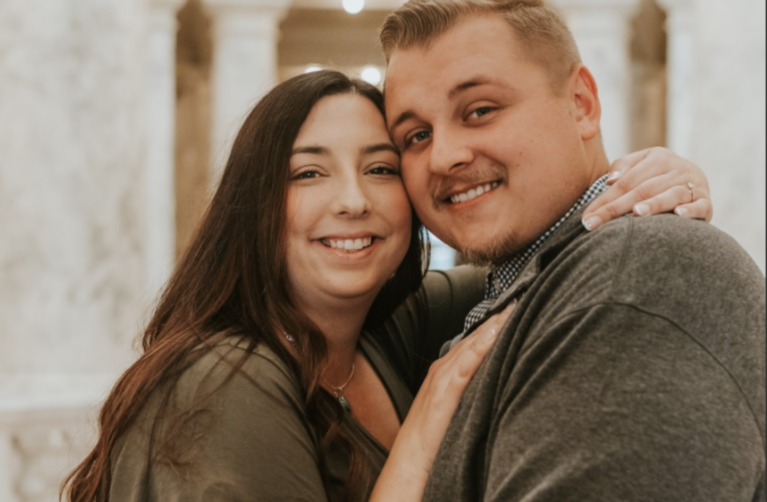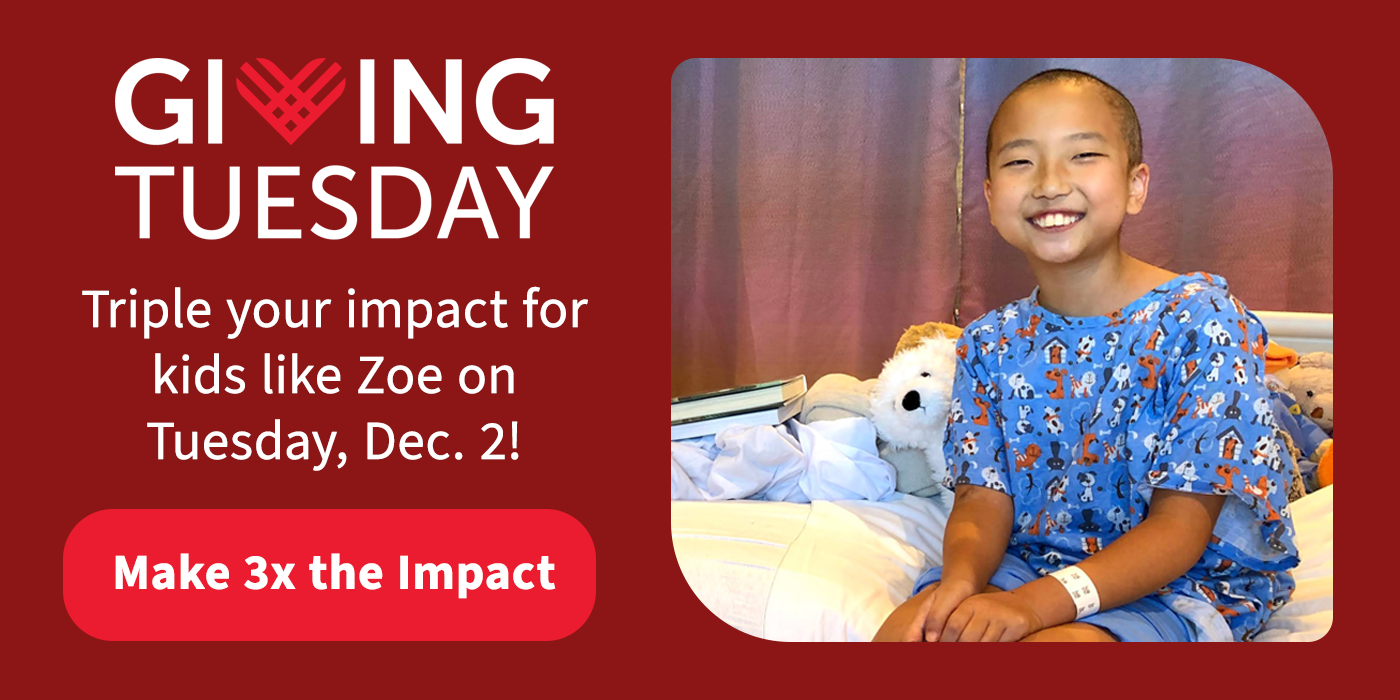The outbreak of COVID-19 this spring brought challenges and uncertainty to our world. We are proud to share how Lucile Packard Children’s Hospital Stanford quickly ramped up frontline efforts to care for the physical and mental health of our patients, families, staff, and community, as well as research to solve this global problem. These efforts would not have been possible without donor support. Philanthropy fuels research and drives discoveries. We are deeply grateful for friends like you, whose support enables us to have the greatest impact for kids and expectant mothers in our community and around the world.
Moment of Gratitude: First responders and law enforcement lined up outside Packard Children’s to show their appreciation as medical staff arrived and departed during the 6:15 a.m. shift change.
Stanford Leads the Way: Stanford pathologist Benjamin Pinsky, MD, PhD, and his colleagues deployed one of the first FDA-approved diagnostic tests for COVID-19. They provided testing not only to Stanford and Packard patients but to other Bay Area hospitals as well.
Drive-Through Testing: For maximum safety, patients remained in their cars for testing. At the height of the pandemic, Stanford processed 1,000 tests a day, helping families get the answers and care they needed.
Researchers Chip In: As the need for testing mounted, the supply of RNA extraction kits required for lab analysis at Stanford dwindled. Michelle Monje, MD, PhD, was among the researchers who collected supplies, filling her Honda Odyssey with dozens of COVID-19 testing kits. “There was a really nice spirit of wanting to help as much as we could,” she says.
Simple Solution: David Camarillo, PhD, associate professor of bioengineering at Stanford, and his lab designed and built simplified ventilators for patients with severe cases of COVID-19 in regions where the machines are scarce. The project was made possible by a grant from the Chan Zuckerberg Biohub.
Surge in Telehealth Visits: Stanford Children’s Health performed up to 800 virtual visits per day. It allowed families to shelter in place and reduce the spread of COVID-19 while continuing to receive the care they needed.
Chalk Art Brings Cheer: Our child life specialists shared positive messages of hope through sidewalk chalk art on our hospital walkways.
High-Tech Help: Donors contributed funds to purchase two “germ-zapping robots.” The robots prevent harmful infections by quickly destroying deadly microorganisms with ultraviolet light.
Procedures Postponed: While COVID-19 isn’t as prevalent among children, the impact on Packard Children’s patients was real. To prepare for a potential surge in patients and minimize the risk of infection, our hospital postponed key procedures. Paizlee Davenport’s kidney transplant was postponed to keep her dad, who was also her organ donor, safe. The hospital resumed these important procedures in May, and Paizlee received her new kidney in June.
Fun and Games: With our playrooms closed, Child Life and Sophie’s Place Broadcast Studio increased programming that patients and families could enjoy from their rooms. A show called “Taste Buds” featured pediatric neurosurgeons David Hong, MD, and Gerald Grant, MD, FACS, competing in a taste test.
Making Masks: Volunteers from the Auxiliaries’ Hearts and Hands affiliate sewed more than 3,000 masks in nine weeks for hospital staff and families to use outside the hospital.
Discovery of Rare Syndrome in Kids: Most kids with COVID-19 had mild, moderate, or asymptomatic cases. In May, physicians in New York, London, and elsewhere noticed that some children with COVID-19 were exhibiting symptoms of a serious multisystem inflammatory condition.
Combating Secondary Impacts of COVID-19 on Underserved Communities: The Pediatric Advocacy Program worked with government agencies to secure legal help for COVID-19-related housing issues, improve employment benefits, and increase access to mental health care. The Department of Family-Centered Care helped patient families unable to afford food while in the hospital and partnered with food banks to ensure families had enough to eat when they returned home.
Video Goes Viral: Clinical Assistant Professor Maya Adam, MD, created a short, wordless animated video demonstrating how to prevent transmission of the virus. The video spread worldwide, attracting 1.2 million views within 10 days.
Even during the seven weeks at the height of the pandemic, Packard Children’s continued to deliver care:
- 603 babies were born
- 46 heart surgeries were performed
- 7 stem cell transplants and 6 organ transplants were deemed essential
This article originally appeared in the Summer 2020 issue of Packard Children’s News.
